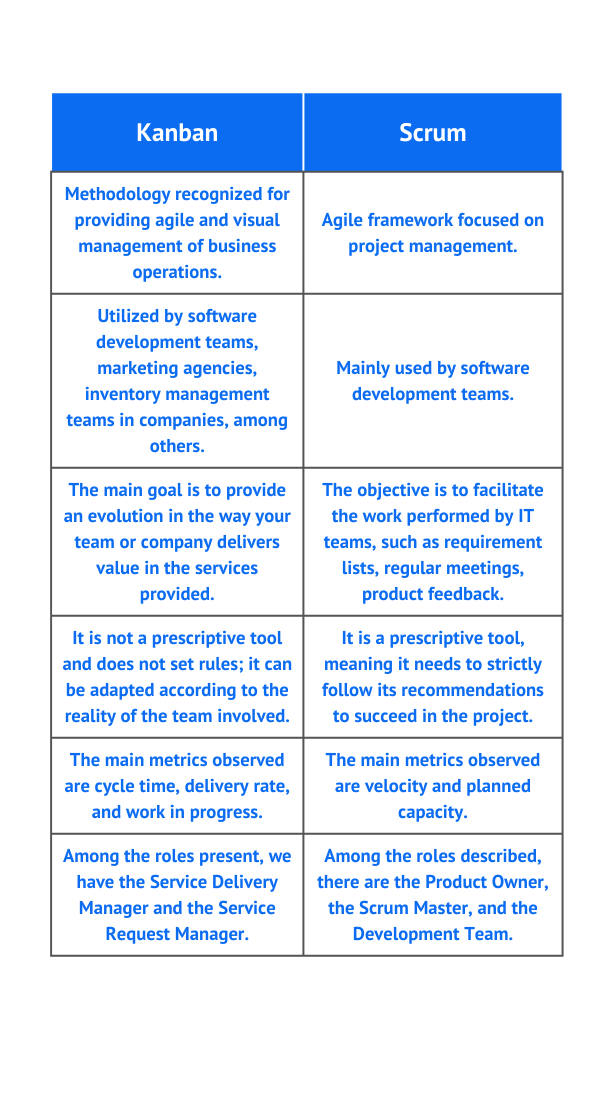
Kanban is a methodology widely recognized for its flexibility and efficiency, standing out for offering agile and visual management of business operations.
Highly popular in the world of information technology, it has been explored by companies and in other areas such as marketing, administration, among others.
Additionally, Kanban is a novelty among the components of Suite SA 10, which will be launched soon, making the management of team demands a simple and easy activity.
The components of Suite SA are additional tools provided free of charge to Interact clients. Among them are BAM Analysis, Why Analysis, SWOT Analysis, Ishikawa, Risk Map, Scrum, among others.
Haven’t heard of Kanban yet?
It’s a management control system for production flow in companies and projects that uses colored cards, similar to post-it notes, giving it the secondary name of visual management.
Of Japanese origin, Kanban can be translated as card or signage. It was developed in the 1940s by Toyota to promote inventory control so that their products neither exceeded nor lacked materials. Its simplicity, combined with its benefits, has made this method one of the most widely used by companies in all sectors.
In Brazil, it has been in use for many decades and not only in industries but also in many ventures aiming to achieve excellence in their activities.
Practical examples of using the tool include managing team demands, tracking progress in marketing activities, tracking software development work, and general task management.
Types of Kanban
The existing types of Kanban are divided into movement and production, with the production type being the most suitable for business use.
The movement type is used by more areas involved in a particular task, receiving a notification to start production or waiting for a notification to do so.
On the other hand, the production type is essential for all responsible collaborators to visualize the project sequence through boards or specialized software. In this case, the boards are divided into To Do: what needs to be done; Doing: tasks in progress; and Done: completed tasks.
This visual facilitation contributes to improved communication among collaborators, making teams faster and more effective, as everyone will know exactly the tasks that need to be done and those stages that have already been completed.
5 Benefits of Kanban
1) Reduces process execution time: When activities are visible to all collaborators and responsibilities are clear, processes can be executed in less time while still ensuring the quality of deliveries.
2) Eliminates unnecessary activities: When processes are delimited and managed, the team focuses on what really brings results. Therefore, it becomes easier to identify and eliminate tasks that do not add value to the process.
3) Dynamism among people: Kanban stimulates dynamism among the people involved in the process by encouraging collaboration, transparent communication, and teamwork.
4) Autonomy: Provides individual autonomy and responsibility, considering that each person is encouraged to actively contribute to the project’s success, whether making decisions or performing activities necessary for the flow.
5) Visual metrics: One of the core values of the methodology is the focus on continuous improvement of team efficiency with each work interaction. Charts are a visual mechanism for teams to ensure the continuity of improvement, and the most common Kanban reports are charts related to controls and cumulative flow diagrams.
Kanban x Scrum
Reached this point and wondered what the difference between Kanban and Scrum is? Then, continue with us, as this will be the topic in the infographic below.
Although they are similar, there are differences between them:

We remind you that Kanban is not a replacement for Scrum, but both can be combined to achieve more effective results.
And if you already use Scrum and would like to also use Kanban, don’t worry, because it will be available among the tools in Suite SA.
When to Use Kanban?
As mentioned earlier, the methodology is versatile and can be applied in various contexts and areas, for example:
- Project Management;
- IT Management;
- Software Development;
- Production Flow Management;
- Finance;
- Logistics and Supply Chain;
- Design;
- Marketing;
- Customer Service;
- Personal Task Management;
- Office Workflow Management.
Author:

Bianca Wermann
Journalist, Communication and Marketing Analyst at Interact Solutions.



